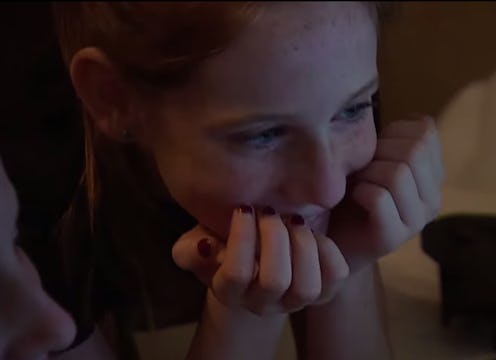Life
How It Feels To Be Allergic To The Sun

When Savannah Fulkerson was 4 years old, she began to have strange reactions to going outside. After a few minutes in the sun, she would start screaming, complaining that her skin was burning. In the years following, the California-based girl would experience bouts of extreme pain and itching after being in the sun — so intense that her mom would pack her hands in ice or have her stand in cold water. Fulkerson told ABC News, “It just felt like lava was being poured on me. Like, it burned from the inside out.” Five years later, she finally received a diagnosis: Effectively, the 11-year-old is allergic to the sun.
In an interview with ABC News, Savannah’s mother, Andrea, explained that, throughout their years of searching for a diagnosis, they were told by doctors that Savannah simply had eczema. Eczema, however, didn’t explain Savannah’s extreme symptoms, which, in addition to painful burning and itching, also include blisters and scarring. Finally, Dr. Minnelly Luu of Children’s Hospital Los Angeles was able to give them some answers, based on a simple blood test: Savannah has a rare genetic disorder called Erythropoietic Protoporphyria (EPP), which makes her skin dangerously sensitive to sunlight. Although Savannah says that it’s easiest to simply tell be that she’s allergic to the sun, EPP is not, in fact, an allergy. According to the American Porphyria Foundation, EPP is “characterized by abnormally elevated levels of protoporphyrin IX” in red blood cells and plasma; These elevated levels cause intense photosensitivity, which in turn causes the extreme itching and pain that Savannah experiences after sun exposure.
There is no cure for EPP, though ABC News notes that there is a drug currently being evaluated by the FDA that has shown encouraging results in treating the disorder. As it stands, the most effective way to manage EPP is to stay out of the sun or to wear protective clothing when outside. Savannah explains that she usually sticks to the indoors during the day — she even as an indoor trampoline to let her release excess energy. When she does go out in daylight, she wears protective sleeves over her arms, gloves, and a wide-brimmed sunhat.
Although the prospect of living life away from the sun would be daunting for anyone, Savannah has hope for the future and an admirable attitude about her disorder. She says,
“It doesn’t define me. When I get older, it’s not gonna change what I want to do in life.”
Watch the whole story:
Images: YouTube (3)